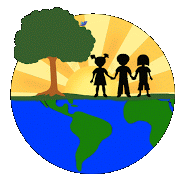
MONTESSORI
MOREAU
Curriculum
The Montessori learning environment is much different from day care, child care, or traditional school. Rather than information passing from teacher to student, the teacher (or directress) prepares the environment and activities, sets behavioral examples, and links the child to the prepared environment with introductions and lessons. The child then learns by teaching himself and is motivated by the excitement of the process rather than the end product or the teacher.

The Montessori Classroom
The structure of Montessori learning involves the use of a wide range of Montessori materials that the child selects and works with individually in a non-competitive atmosphere. Each activity is designed to test the child's understanding and errors are self-correcting. The Montessori environment maintains a balance between freedom and order.
The child is free to move about and choose his or her own activities. However, he or she adheres to ground rules of order, respect for materials, and respect for peers. These rules are designed to develop a sense of independence, self-respect, and self discipline.
The Montessori environment includes curriculum areas that emphasize specific skills, but there is dynamic interplay among the areas, enhancing children’s natural learning process. At any one time in a day, all subjects are being studied at all levels by children of mixed ages learning from each other, and facilitated by careful observation, individual lessons, record keeping, and help of the teacher. Children thus taught often surpass the level of education of their peers in traditional public and private schools.